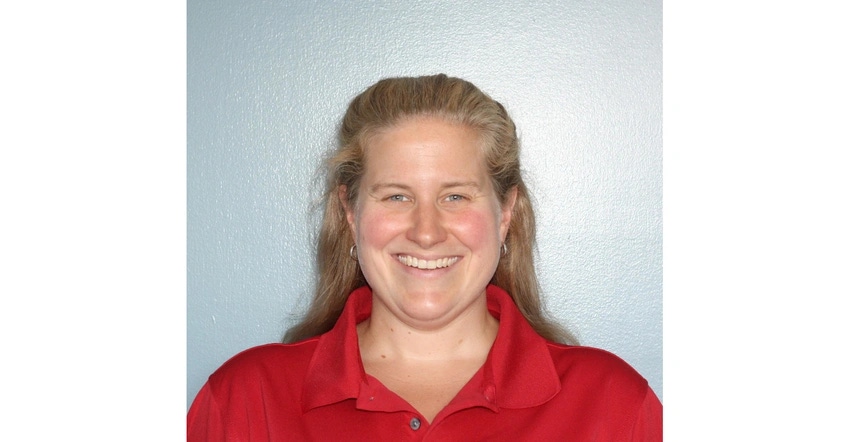Q&A: Exploring Static Pressure in Dust Collection Systems
This Q&A is from the 2024 DryPro Webinar with the same title.

Recently, Powder & Bulk Solids presented “Exploring Static Pressure in Dust Collection Systems” as part of its DryPro webinar series. In it, static pressure and how to create a better understanding of it with respect to dust collection systems and system design was discussed.
Diane Cave, P.Eng, regional manager of Eastern Canada at Element6 Solutions, discussed various scenarios of static pressure in dust collection systems, and answered questions including what is static pressure and why is it so important with respect to the dust collection system? What happens if it is forgotten? How is it calculated? These questions come up time and time again when the topic of static pressure is brought up.
After the presentation portion of the webinar, a live Q&A took place. Here are the questions and answers.
Q. Could you give a basic explanation about why you size the static pressure based on the “worst” leg instead of adding the static pressure of all the legs together?
The static pressure of the worst leg is what dictates the static pressure for the system. If a system has 42 different branches, the static pressure of the system is not additive of all the branches together. The static pressure is always determined by the branch that has the highest static pressure. Air will go in and be distributed throughout the system if the static pressure is somewhat balanced. If the same static pressure is present in all the branch lines, you should get your designed airflow. But if you have a higher static pressure, air is going to be less reluctant to go down the higher static pressure lines and that is how it is determined to balance out.
Q. When is the secondary fan needed and how do you size it?
If you were designing a brand-new system, I would not recommend designing it with a secondary fan. But if you modifying and existing system and you have exceeded the static pressure capacity of the existing fan, (but have the capacity the dust collector), then you can add in a second fan rather than replacing the existing one with one that could service the entire system, but you have to be careful.
Q. Will the system "self-regulate" to where you won't get the listed flowrates? P1 at branch and P2 at the atmosphere for each system is the same, so doesn't the pressure drop across each of those have to be the same, leading to a reduction in flow on the higher pressure drop line?
I think yes. Air will self-balance and self-regulate through the system. Based on your flow requirements at the collection point, ideally each branch line should have, if possible, somewhat equal static pressure. If you have each line that has say 3.5” wg of static pressure and one line that has 10” wg, minimal air will go down the line with 10” wg because it is too much work for the air. I’d always say that air is lazy. If it’s too much work, air will not do the work and will take the path of least resistance. Why do the work for 10” wg when there is a perfectly good branch with 3.5” wg, much less work. When you’re actually designing the system you want to make sure you have a balance of static pressure in each of your branch lines so you get even distribution of your desired flow at your collection points.
Q. Any recommendations for software to make system design easier? I’m aware Pipe-Flo can now do ductwork, any others?
When I first started, way too long ago, there was software called Heavent, and it was hard to use and clunky. That’s the only one I have ever used. I’m sure by now there’s probably other software for HVAC because there is a higher demand for it.
Q. Can you talk about the importance of fighting the pressure drop of the process equipment the system serves?
In the example I gave [in the webinar], we have hoods. But in a lot of cases, the hoods are not really hoods, but connected to pieces of equipment. Sometimes you can get that static pressure drop of what it is to connect to the piece of equipment for the dust collection system; not very often. But it’s something important to make sure you account for, because if you forget about it, you can end up oversizing or undersizing your system and have problems down the line.
Q. Should we design the fan with a bigger capacity and install a VFD to stay in a correct range of operation? If so, what percentage would you recommend for extra capacity (%)?
If you have some foresight into what your future system will look like, then definitely build that into your design and you can build in air bleeds in your ducting and VFDs and whatnot. But if you don’t know what your future system will look like, but you know that it’s going to expand, then I would try to get a bigger fan. 15-20% seems to be good, but the problem is your static pressure. You will need more volume in terms of air for your CFM, which is always 15-20% more but you don’t necessarily know what your static pressure is going to do. Let’s say it’s connected to a dust collector and you allow for 10” wg across the dust collector instead of having the 10” wg and your system as you expand it goes up 6” wg of static pressure then it would be cut short as to when you need to change filters for your fan to be able to keep up with your system.
Q. How are positive and negative pressures added when sizing the system?
They’re all considered positive when calculating because in this method, it’s a velocity pressure method. Velocity pressure is always positive. Then you calculate them and add them together. If it’s a suction system, then it’s negative.
View the Exploring Static Pressure in Dust Collection Systems webinar on demand here.
About the Author(s)
You May Also Like



